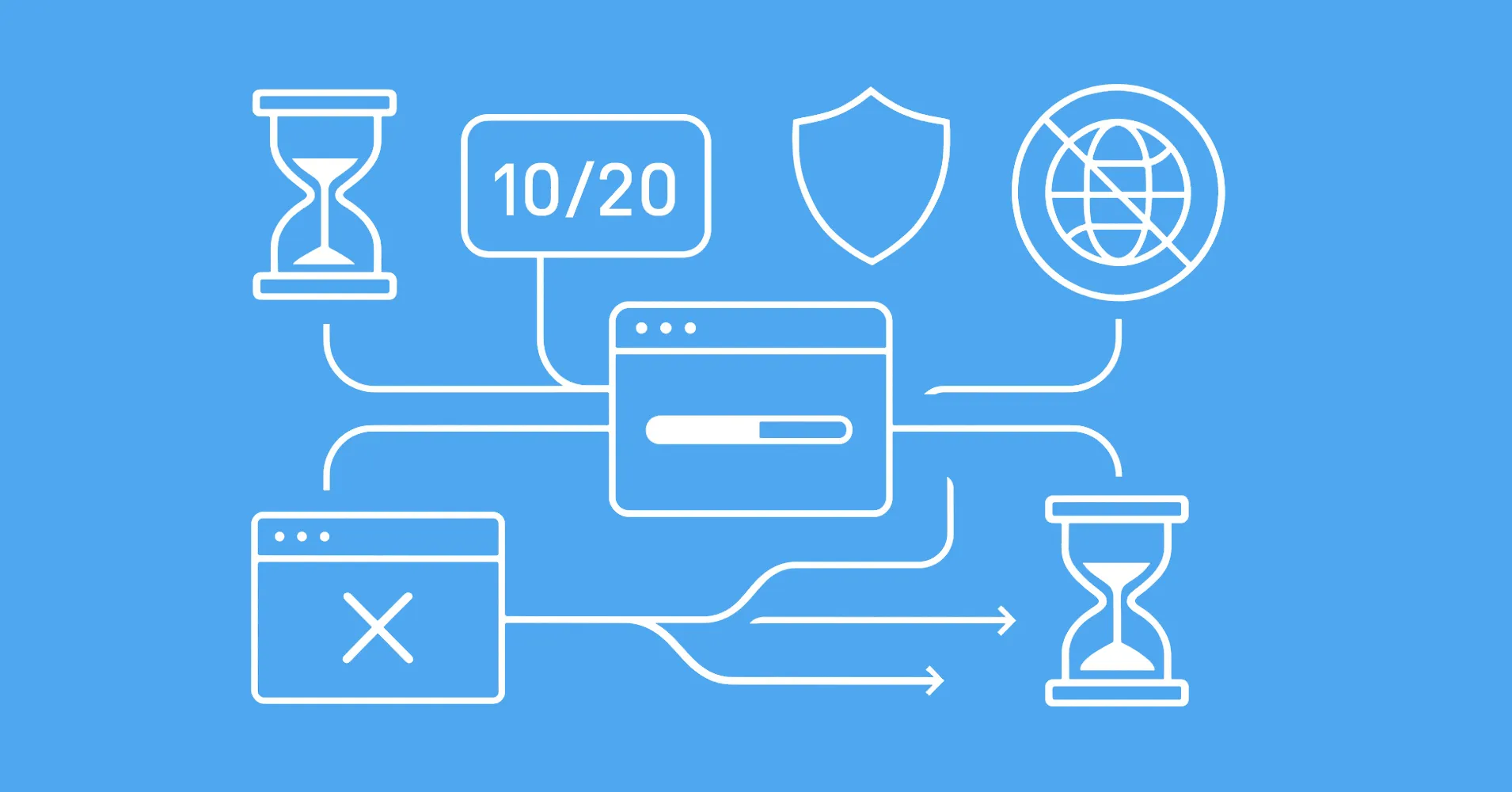
When working on web scraping or automation, encountering HTTP errors can be frustrating, and HTTP error 406 is one that indicates a mismatch in the type of content being requested.
In this article, we'll explore what HTTP 406 means, the common causes behind it, and whether it could be used as a blocking strategy. We'll also dive into how Scrapfly can help you bypass this error effectively.
Key Takeaways
Fix 406 not acceptable errors by configuring proper Accept headers (text/html, application/xhtml+xml), language headers (en-US,en;q=0.9), and encoding support (gzip, deflate, br) to successfully access web content.
- HTTP 406 "Not Acceptable" occurs when server cannot deliver content matching the client's Accept- headers
- Common causes include misconfigured Accept, Accept-Language, or Accept-Encoding headers in requests
- Header configuration is crucial - use realistic browser headers like text/html,application/xhtml+xml,application/xml;q=0.9,/;q=0.8
- Language headers should match target region (e.g., en-US,en;q=0.9 for US English content)
- Encoding support should include gzip, deflate, br to match modern browser capabilities
- Content negotiation allows servers to return different formats based on client preferences
- Anti-blocking strategy - 406 errors can sometimes be used as a blocking mechanism by websites
- Scrapfly integration provides built-in header management and proxy rotation to avoid 406 blocks
What is HTTP Error 406?
406 Not Acceptable error occurs when the server is unable to deliver a response in a format that matches the criteria defined by the client's Accept- headers. Essentially, the server understands the request, but it cannot find a response that fits the content types or formats that the client is willing to accept.
What are HTTP 406 Error Causes?
The most common cause of a 406 error is misconfigured Accept- headers. These headers tell the server what content types the client expects in the response, such as:
- Accept: Specifies the expected media type, like
application/jsonortext/html. - Accept-Language: Indicates the preferred languages for the response, e.g.,
en-US. - Accept-Encoding: Defines the compression formats that the client can handle, like
gzipordeflate.
If the server cannot provide a response that matches the specified Accept- headers, it will return a 406 status code.
Practical Example
Let's explore how to configure headers, specifically Accept- headers, in common tools like python's httpx library, and cURL.
curl -H "Accept: application/json" -H "Accept-Language: en-US" https://httpbin.dev/json
import httpx
url = "https://httpbin.dev/json"
headers = {
"Accept": "application/json", # Expecting JSON response
"Accept-Language": "en-US", # Preferring English
}
response = httpx.get(url, headers=headers)
print(response.status_code)
print(response.text)
const url = "https://httpbin.dev/json";
const headers = {
"Accept": "application/json", // Expecting JSON response
"Accept-Language": "en-US", // Preferring English
};
fetch(url, { headers })
.then(response => response.json())
.then(data => console.log(data))
.catch(error => console.error('Error:', error));
use reqwest::header::{ACCEPT, ACCEPT_LANGUAGE};
use std::error::Error;
#[tokio::main]
async fn main() -> Result<(), Box<dyn Error>> {
let client = reqwest::Client::new();
let response = client
.get("https://httpbin.dev/json")
.header(ACCEPT, "application/json")
.header(ACCEPT_LANGUAGE, "en-US")
.send()
.await?;
println!("Status: {}", response.status());
println!("Body: {}", response.text().await?);
Ok(())
}
package main
import (
"fmt"
"io/ioutil"
"net/http"
)
func main() {
client := &http.Client{}
req, err := http.NewRequest("GET", "https://httpbin.dev/json", nil)
if err != nil {
fmt.Println("Error:", err)
return
}
req.Header.Add("Accept", "application/json")
req.Header.Add("Accept-Language", "en-US")
resp, err := client.Do(req)
if err != nil {
fmt.Println("Error:", err)
return
}
defer resp.Body.Close()
body, _ := ioutil.ReadAll(resp.Body)
fmt.Println("Status:", resp.Status)
fmt.Println("Body:", string(body))
}
require 'typhoeus'
url = "https://httpbin.dev/json"
response = Typhoeus.get(url, headers: {
"Accept" => "application/json", # Expecting JSON response
"Accept-Language" => "en-US" # Preferring English
})
puts "Status: #{response.code}"
puts "Body: #{response.body}"
<?php
$url = "https://httpbin.dev/json";
$client = new \GuzzleHttp\Client();
$response = $client->request('GET', $url, [
'headers' => [
'Accept' => 'application/json', // Expecting JSON response
'Accept-Language' => 'en-US', // Preferring English
]
]);
echo "Status: " . $response->getStatusCode() . "\n";
echo "Body: " . $response->getBody();
In both examples, the client is requesting a response in application/json format and prefers the response language in en-US. If the server cannot match these criteria, a 406 error might occur.
To avoid 406 errors, ensure that your Accept- headers are set appropriately for the resource you're trying to access.
406 in Web Scraping
When it comes to web scraping 406 status code is most commonly encountered when Accept- family headers are not provided or misconfigured.
Most HTTP clients do no add default Accept- headers, so you need to set them manually. To verify what headers need take a look at how the website behaves in your web browser using Browser Developer Tools. Using the Network tab, you can see the exact Accept [tref how-to-scrape-hidden-apis "headers your browser is sending" %] and replicate them in your scrapers.
Alternatively, there's a small possibility that 406 error is returned deliberately by the server to block web scraping and deceive the scraper in thinking there's a technical issue. If that's the case see our guide on fortifying web scrapers against blocking.
Power Up with Scrapfly
ScrapFly provides web scraping, screenshot, and extraction APIs for data collection at scale.
- Anti-bot protection bypass - scrape web pages without blocking!
- Rotating residential proxies - prevent IP address and geographic blocks.
- JavaScript rendering - scrape dynamic web pages through cloud browsers.
- Full browser automation - control browsers to scroll, input and click on objects.
- Format conversion - scrape as HTML, JSON, Text, or Markdown.
- Python and Typescript SDKs, as well as Scrapy and no-code tool integrations.

It takes Scrapfly several full-time engineers to maintain this system, so you don't have to!
Summary
HTTP 406 errors are caused by a mismatch between the Accept- headers sent by the client and the formats the server can deliver. While unlikely, these errors can sometimes be used as a blocking mechanism. Using Scrapfly's advanced tools, including proxy rotation and customizable requests, you can bypass 406 blocks and keep your web scraping running smoothly.






